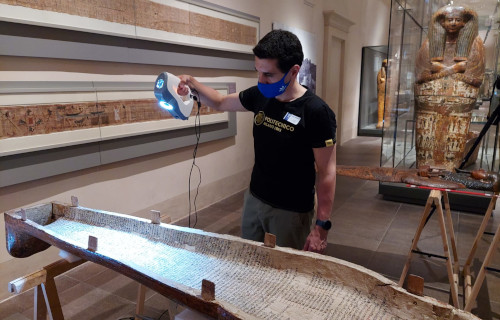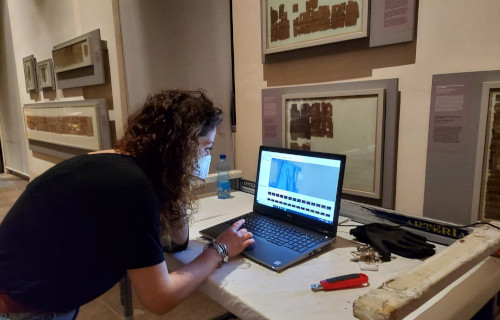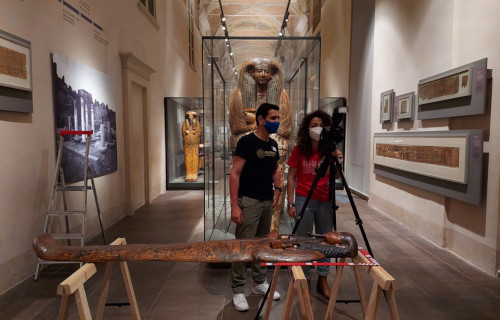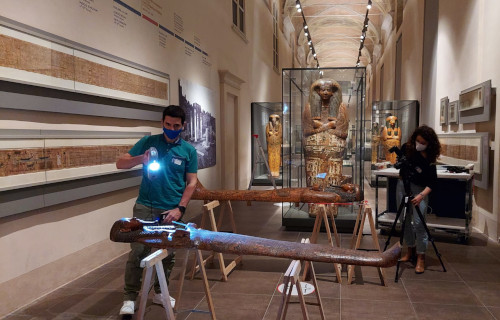Coffins held a special role in the religion of Ancient Egypt. They were one of the most important elements for the preservation of the body in the afterlife.
The “Faces Revealed” project focus on the study of the yellow coffins, a specific class of artefact that appeared in Thebes at the end of the New Kingdom and were used for more than a millennium peaking during the 21st Dynasty (1069-945 BCE ca.).
In recent years, the question of the identity of ateliers and the reuse of the objects have been the subject of specific projects characterized by the combination of different but interconnected skills and competences from diverse disciplines: Egyptology, Diagnostic and Conservation. Thanks to such collaborations, a protocol of scientific analyses and a specific methodology have been devised that aim at studying the composition of the various materials and deepening our understanding of the practices lying behind ancient reuse using the latest technologies available in Cultural Heritage.
The “Faces Revealed” project takes its lead from these innovative research trends and seeks to contribute to the study of the coffins through the development of a new and efficient methodology based on a simple yet low-cost technology.
The project is mainly based on the analysis of the coffin faces which in general terms appear to have been made from one large piece of wood, which was then carved into shape. There is normally only a small quantity of plaster visible, and where this was applied it also served to help to create curved surfaces. At the end of the production phase, the painted decoration was applied. Facial features are important elements in understanding the typology and classification of statues, but they have rarely been considered in the analysis of Egyptian coffins, perhaps because such features are difficult to discern under the superimposed pictorial decoration.
Today, new technology can help us: photogrammetry is particularly useful for this structural analysis. The monochrome solid model, curvature shading, and shadowsallow us to discover the original sculpture of the face and can reveal fine surface details, which are not always discernible in visible light, because they are mostly covered by the painted layers. This evidence has never been considered before and, therefore, has much potential to add to both the recent projects concerned with the yellow coffins and the more traditional analytical approaches to these objects. In both cases, they consequently pose a series of interesting questions on Egyptian burial practices.
Stefania Mainieri is the Principal Investigator of the Project, coordinated by Christian Greco, Director of the Museo Egizio di Torino, and Kathlyn Cooney, Professor of Egyptology at the University of California, Los Angeles.
The Department of Architecture, Built Environment and Construction Engineering (ABC) of Politecnico di Milano is hosting Mainieri as secondment of the project for a training period, supervised by Corinna Rossi, Professor of Egyptology and led by Dr Alessandro Mandelli, Senior Specialist Technician at ABCLab.
Find out more
The news from the Museo Egizio di Torino.
The Facebook page of the Faces Revealed project.
The Project has received funding from the European Union's Horizon 2020 research and innovation programme under the Marie Sklodowska-Curie Grant agreement No 895130.





